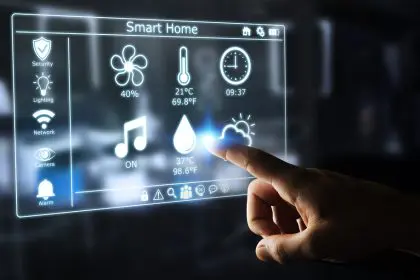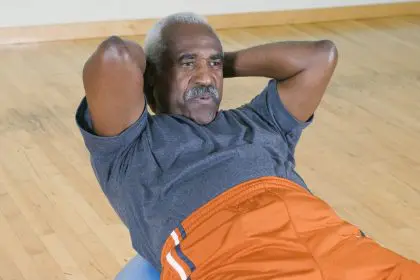In our increasingly sedentary society, the challenge of maintaining an active lifestyle through “micro-walking” has never been more daunting. However, this groundbreaking approach to physical activity is gaining traction, offering hope to those struggling to find time for traditional exercise routines. This innovative method is reshaping our understanding of what it means to stay fit in the modern world.
Micro-walks, defined as brief walking sessions lasting between 10 to 30 seconds, are emerging as a powerful tool in the fight against inactivity. This approach, backed by recent scientific research, suggests that these short bursts of movement may be equally, if not more effective, than longer, continuous walks in promoting overall health and well-being.
The science behind micro-walks
A study published in the Proceedings of the Royal Society B has shed light on the potential benefits of micro-walks. The research involved participants engaging in various walking activities, from brief 10-second bursts to more extended four-minute sessions. By measuring oxygen intake as a proxy for energy expenditure, researchers made a startling discovery: those who participated in micro-walks burned up to 60% more energy than their counterparts who walked for longer durations, despite covering the same distance.
This finding challenges the conventional wisdom that longer exercise sessions are always better. Instead, it suggests that short, intense bursts of activity can significantly boost metabolism and calorie-burning potential, offering a more efficient approach to physical activity for many individuals.
The metabolic advantage
The metabolic boost provided by micro-walks is particularly noteworthy. When we engage in short bursts of activity, our bodies must quickly adjust to the sudden increase in energy demand. This rapid transition can lead to a more significant metabolic response compared to the steady-state metabolism associated with longer, continuous exercise sessions.
Moreover, the frequent transitions between activity and rest throughout the day may help maintain a higher overall metabolic rate, potentially contributing to improved weight management and energy balance.
Cardiovascular benefits
While traditional cardiovascular exercise often involves sustained periods of elevated heart rate, micro-walks offer a different approach to heart health. The frequent, brief increases in heart rate and blood flow associated with micro-walks can help improve cardiovascular function over time.
This intermittent cardiovascular stimulation may be particularly beneficial for individuals who find longer exercise sessions challenging or those with conditions that limit their ability to engage in sustained physical activity.
Mental health and cognitive function
The benefits of micro-walks extend beyond physical health. Regular movement throughout the day can have profound effects on mental well-being and cognitive function. Brief walks can serve as mental reset buttons, helping to clear the mind, reduce stress, and improve focus.
Furthermore, the act of taking regular breaks from sedentary activities, such as sitting at a desk, can help combat the negative cognitive effects associated with prolonged inactivity. This can lead to improved productivity, creativity, and overall mental performance.
Digestive health improvements
One often overlooked benefit of micro-walks is their potential impact on digestive health. Regular movement throughout the day can help stimulate the digestive system, promoting better gut motility and potentially reducing issues such as bloating and constipation.
By incorporating micro-walks into your daily routine, you may find improvements in your overall digestive comfort and function, contributing to better overall health and well-being.
Practical implementation of micro-walks
Integrating micro-walks into daily life is remarkably straightforward and can be accomplished in various settings. Here are some practical strategies to incorporate this innovative approach to movement:
- Set hourly reminders: Use your smartphone or wearable device to prompt you to take a brief walk every hour.
- Utilize stairways: Opt for stairs instead of elevators whenever possible, taking a moment to ascend and descend a few flights as a micro-walk.
- Walk during breaks: Use work or study breaks as opportunities to step outside or walk around your immediate environment.
- Implement walking meetings: For phone calls or small group discussions, consider walking while you talk.
- Create a walking workspace: If possible, set up a standing or treadmill desk for short bursts of walking while working.
- Use commercial breaks: During television viewing, use advertisement breaks as cues for quick walking sessions.
- Park farther away: Choose parking spots that require a short walk to your destination.
- Set micro-goals: Challenge yourself to reach specific step counts or distance goals throughout the day.
Rethinking step count goals
The traditional target of 10,000 steps per day has long been the gold standard for daily activity. However, recent research suggests that this benchmark may be unnecessarily high for many individuals. Studies indicate that aiming for around 7,500 steps per day may provide significant health benefits while being more attainable for those new to regular physical activity.
The micro-walk approach aligns well with this revised perspective on step counts. By focusing on frequent, short bursts of activity rather than long, continuous walks, individuals may find it easier to accumulate a beneficial number of steps throughout the day.
The role of proper footwear
To maximize the benefits of micro-walks and ensure comfort during these frequent movement sessions, appropriate footwear is crucial. When selecting shoes for micro-walking, prioritize options that offer good support, cushioning, and flexibility.
Look for shoes with features such as:
- Breathable materials to keep feet cool and dry
- Adequate arch support to prevent fatigue
- Cushioned soles for impact absorption
- Flexible midsoles to allow natural foot movement
- Secure fit to prevent slipping or blisters
Investing in quality walking shoes can make a significant difference in your comfort and ability to maintain a consistent micro-walking routine.
Overcoming barriers to implementation
While micro-walks offer a highly accessible approach to physical activity, some individuals may still face challenges in implementing this strategy. Common barriers might include:
- Time constraints in highly structured work environments
- Limited space for walking in certain settings
- Self-consciousness about taking frequent walking breaks
- Difficulty remembering to take regular movement breaks
Addressing these barriers may require creativity and commitment. Some solutions might include discussing the health benefits of micro-walks with employers to gain support for regular movement breaks, identifying small spaces where short walks can be taken discreetly, or using technology to provide reminders and track progress.
Conclusion: A step towards a healthier future
The concept of micro-walks represents a paradigm shift in our approach to daily physical activity. By breaking down the daunting task of “exercising” into small, manageable chunks spread throughout the day, this method offers a realistic and effective way to combat the health risks associated with sedentary lifestyles.
As we continue to navigate the challenges of modern life, including increased screen time and desk-bound work, the importance of regular movement cannot be overstated. Micro-walks provide a flexible, accessible solution that can be adapted to various lifestyles and physical abilities.
By embracing this innovative approach to staying active, individuals can take significant strides towards improved physical health, enhanced mental well-being, and a more balanced, energetic daily life. Remember, when it comes to physical activity, every step counts, and with micro-walks, those steps can add up to substantial health benefits over time.











